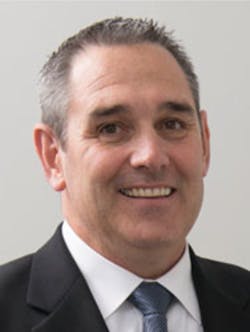The topic of medical device instructions for use (IFU) is a hot one among manufacturers, central sterile/sterile processing department (CS/SPD) professionals, regulators and industry associations. Those in the CS/SPD say current IFUs are overly complex, too vague or too specific, confusing and often impossible to follow in their real-world environments.
Manufacturers, on the other hand, are challenged with developing standard sets of instructions that any CS/SPD can use to effectively and safely process their devices knowing that equipment and CS/SPD staff capabilities vary widely from one healthcare facility to the next.
Here, Healthcare Purchasing News presents insights from both CS/SPD professionals and manufacturers on the challenges of IFUs, efforts underway to address them, and further suggestions for improving IFU adherence.
IFUs in the real world
In March 2015, the Food and Drug Administration (FDA) released its guidance entitled: Reprocessing Medical Devices in Health Care Settings: Validation Methods and Labeling, Guidance for Industry and Food and Drug Administration Staff, which provides “guidance to medical device manufacturers in the complex activities involved in crafting and validating reprocessing instructions that ensure that the device can be used safely and for the purpose for which it is intended.”1
But as we explored in the April 2017 HPN article, “Validated? It’s complicated” the validation of an IFU in a manufacturer’s controlled environment is a world apart from a technician’s use of that IFU in his or her department.
“Think about this for a moment: Your facility should follow the manufacturer’s IFU for EVERY device in use,” said Bob Marrs, CRCST, CIS, CHL, SPD Market Development Manager, Aesculap. “How many different manufacturers have products in your facility? A safe estimate would be 100 or more.
“Don’t be blind to the fact that IFUs apply only to instrumentation,” added Marrs. “What about equipment (ultrasonic cleaner, washer disinfectors and sterilizers) and chemistries for the manual cleaning sinks, ultrasonic cleaners and washer disinfectors? Are they being dosed properly and are the appropriate temperatures being maintained according to the manufacturers’ IFU? What about biological indicators, containers, blue wrap, peel pouches and sterilization tape? This list goes on and on. As you can see, CS/SPD professionals are faced with a daunting and overwhelming task.”
In an ideal world we could wave a magic wand and standardize all equipment and processes across every CS/SPD so that every technician was processing every device in adherence to the manufacturer’s IFU in the exact same environment with the same equipment and skill level. But even then, CS/SPD professionals agree that many manufacturer IFUs available today, even those aligned with the FDA’s 2015 guidance, do not meet their needs.
“IFUs have gotten much easier to use in the past few years; however, they are still incredibly difficult for the majority of technicians to follow,” said Mary K. Lane, MHA, CSPDM, CSPDS, CSPDT Interim Director, Sterile Processing, Memorial Health University Medical Center in Savannah, GA. “They are confusing or puzzling at best for the average technician.”
Too complex
“There are a number of different challenges that CS/SPD professionals face in regard to IFUs,” said Joseph Knight, Senior Sales Director, Surgical Workflows, Getinge. “The IFUs on sterilizers and washers contain information on the specific reprocessing cycles/parameters that can be run on the equipment. Healthcare users are instructed to follow the IFU’s provided by the manufacturer of the instrumentation to be sterilized/washed. With the vast array of instrumentation to be reprocessed and with IFUs from many different manufacturers presented in various formats, it can be confusing for the CS/SPD professional. In addition, IFUs may change over time and managing changes in so many different IFUs can be cumbersome and time consuming. When IFUs are not readily available or are not strictly followed it can result in both clinical and financial consequences for the facility.
Too vague
“I actually received instructions that said ‘clean meticulously,’” said Sharon Greene-Golden, BA, CRCST, FCS, Manager, Sterile Processing, Adventist HealthCare Shady Grove Medical Center, in Rockville, MD, and past president of the International Association of Healthcare Central Service Materiel Management (IAHCSMM). “I gathered three techs at different times and had them follow the instructions given. Each person had his or her thoughts as to what constituted a meticulous clean of the instrument. Needless to say it was like the old movie, ‘The Good, the Bad, and the Ugly.’ We had to determine our own way, which is totally wrong.”
Too specific
“At this time, it is unclear exactly how specific IFU information must be, for example if a manufacturer provides the brand and model of washer disinfector used for the validation testing, is that an indication it is the only brand and model of washer disinfector that can be used for cleaning,” said Joan Spear, RN, MBA, CNOR, CRCST, CSPDT, [JMS Consulting] a Clinical Consultant for sterile processing, perioperative nursing and medical devices. “What if the name of the cleaning agent is provided? The user community will need to develop skills in transferring information to facility specific standard operating procedures based on equipment and products in use at that facility.”
“Some CS/SPD professionals have told us they simply don’t have the specific supplies recommended by the device manufacturer in its IFU, and the manufacturer does not provide suggested alternatives,” said Heather Thomas, CMO, Executive Vice President, Sales and Marketing, oneSOURCE. “Manufacturers must take into consideration that their IFUs are being used in a variety of settings. CS/SPD professionals will come to us and ask if they can use something different from what is in the IFU, such as a different size brush, but we can’t make that recommendation — it needs to come from the manufacturer.”
Too long
“We have all had the experience of opening a package and finding the IFU that is folded to the size of a one-inch by one-inch square,” said Marrs. “We start unfolding it and it opens as a scroll spilling down to the floor and rolls out ten feet. Then we begin the arduous task of finding the information regarding cleaning, disinfection, sterilization and storage of the device.”
Too contradictory
“One challenge that I see far too often is contradictory information. This makes things incredibly difficult for all involved in instrument reprocessing,” said Chris Franklin CRCST, CSPDT, CSIS, CFER, Endoscopy Tech at IU Health, Board of Directors for the Certification Board for Sterile Processing & Distribution (CBSPD), and Owner and President of The SPD Network. “Individuals are consequently expected to make a judgment call: (a) try to interpret what the manufacturer intended to say, (b) attempt to contact the manufacturer for clarification, or (c) simply refuse to process the device until clear guidelines are available. This really puts SPD personnel into an unfair predicament.”
Michele DeMeo, CSPDT, CRCST, Independent CS/SPD Consultant at MDD Virtual Consulting, provides this example of conflicting information between the device IFU and an enzymatic solution IFU:
“Perhaps, endoscope ‘x’ requires an enzymatic soak of ‘y’ minutes in ‘z’ product according to the IFU of the endoscope itself, but the solution requires an additional soak time of say five additional minutes. Many may conclude to simply soak the endoscope for the additional time indicated on the IFU for the enzymatic solution but this would be gravely incorrect for numerous reasons, including but not limited to the following: The excess soaking time could erode the epoxy of the lenses and eye piece, interfere with the amount of rinse time needed to ensure the solution is completely removed from the surface and from the interior lumen, or it could penetrate the actual raw materials comprising the scope itself.”
CS/SPD professionals encounter conflicting information not just within a single IFU or between device and cleaning solution IFUs, but also across IFUs for similar products made by different manufacturers.
“It is important for a manufacturer’s instructions for use to be easy to interpret and consistent. A huge barrier for sterile processing technicians who are diligently trying to follow the manufacturer’s IFUs is the inconsistency among different vendors in their instruction to clean similar products,” said Lena Burgess, CRCST, CIS, CFER, CHL, Senior Manager, Clinical Services, Compliance and Safety, STERIS Instrument Management Services. “Instrument sets that contain Adson forceps from two different manufacturers may require completely different cleaning practices based on the instructions for use from those two different companies. This leads to much time spent by sterile processing leadership as they work to build standard operating procedures that encompass all of the different manufacturers.”
Standardization: The magic bullet?
Across the board most stakeholders agree that the establishment of standardized IFU formats would be a major step forward and one that would take much of the mystery — and misery — out of IFUs.
“One of the biggest challenges with IFUs is differing formats,” said Marrs. “Every vendor has its own format and none are similar. This creates a huge challenge for CS/SPD professionals when reviewing them quickly for pertinent information. If all manufacturers were required to follow the same format when creating IFUs it would help the CS/SPD department exponentially and would save a significant amount of valuable time.”
Amanda H. Coss, CSPDS, CSPM, CRCST, CIS, CHL, National Education Coordinator, Mobile Instrument Service & Repair, points out how some IFUs are printed so small that the user needs a magnifying glass to read them. She recommends manufacturers standardize to a font size and type that is clear and easy to read, as well as a standard structure, stating:
“Have standardization and clear order. During each stage of the process each tech should know exactly where to look in the IFU — from pre-cleaning to terminal sterilization and storage. Knowing where to find the information in the IFU at any given step is a huge time saver and crucial for compliance.”
Industry efforts under way
Ralph J. Basile, Vice President of Healthmark Industries, has been directly involved in a number of industry efforts to improve IFU development and use. He is Co-Chair of the Association for the Advancement of Medical Instrumentation (AAMI) Sterilization Standards Committee Workgroup 12 (AAMI ST/WG12), which is a collaborative effort among manufacturers, healthcare professionals, independent testing labs, academia and regulators aimed at developing standardized cleaning protocols for specific categories of instruments.
“The sheer diversity of IFUs that sterile processing departments are expected to comply with is overwhelming,” said Basile. “The diversity of IFUs is a result of a couple of factors. In recent decades, there has been an explosion in the number of complex medical devices. The miracle of these devices is that they can be used to deliver safer, better care, with less trauma to the patient. The flipside of this is that their complexity makes them a much greater challenge to clean. Relatedly, the second factor is there are many more types of medical devices, with different designs and different requirements to get them clean.”
Basile explains that the members of AAMI Workgroup 12 have been updating an important document related to medical device processing, AAMI TIR12: Designing, testing, and labeling reusable medical devices for reprocessing in health care facilities: A guide for medical device manufacturers. He notes how a significant component of that update is new annexes that describe standard cleaning protocols.
“These protocols came directly from work being done by leading, global, medical device manufacturers to reduce the diversity and complexity of cleaning instructions for their own devices,” said Basile. “Working within the framework of AAMI, with the involvement of other medical device manufacturers, FDA regulators, independent testing labs and most importantly, sterile processing professionals, the goal of establishing these protocols is to encourage medical device manufacturers to validate the cleaning of their devices to one or more of these protocols. By doing this, it is hoped that the the diversity of IFUs can be greatly reduced, making it more realistic for healthcare facilities to actually implement the IFUs for the clinically used devices they clean.”
Visit www.hpnonline.com/other-activities aimed-at-ifu-improvement/ for more from Basile on IFU improvements for healthcare facilities.
Further suggestions from across the industry
The standardization of cleaning protocols for groups of similar devices is likely to deliver significant benefits to manufacturers and CS/SPD professionals alike, providing manufacturers templates for IFU development, and CS/SPDs consistent cleaning instructions across product families.
But it can’t end there. Manufacturers and CS/SPD professionals must continue to collaborate on IFUs and share their perspectives, not just collectively on the broader industry level but also individually during day-to-day use of these documents.
“AAMI TIR12:2010 has started to lay the groundwork for more consistency among manufacturers, but there is still much work to be done,” said Burgess. “As an industry, the tough conversations must continue to make sure that manufacturers truly understand the complex job that sterile processing personnel do and why more standardization among IFUs is so critical.”
Below are insights from manufacturers and CS/SPD professionals on additional aspects of IFUs, and factors surrounding these documents, that must be addressed on both sides to impact access, usability and adherence.
Simplify the information
Among those interviewed, many noted how simplification of language and format would go a long way in improving IFU ease of use, and driving greater IFU adherence.
“I’ve noticed that some manufacturers tend to get overly wordy or technical when describing IFUs,” said Franklin. “It would be beneficial for information to be written in a more comprehensible manner. If an individual is having difficulty deciphering the manufacturer’s IFUs then therein lies a problem. End-users should be able to come to the same conclusion while easily understanding the process.
To help in this effort, oneSOURCE has developed a series of Tech-Ready Documents, which Thomas describes as the “CliffsNotes version” of manufacturer IFUs. Manufacturers that provide oneSOURCE with their product IFUs have the option of allowing oneSOURCE to create the Tech-Ready versions, which CS/SPDs can access through the company’s online repository.
According to Thomas, the Tech-Ready versions are extracted as written from the full-length document, with the cleaning, decontamination, assembly and sterilization parameters presented in a concise manner.
Graphics are another way that manufacturers can enhance their IFUs for CS/SPD professionals. Illustrating the steps can help translate the steps and reinforce the message.
“For our products, we recommend following the instructions provided by the manufacturer of the instrument,” Knight added. “We would also recommend that manufacturers follow industry standards (e.g., AAMI TIR12) and FDA Guidance to ensure uniformities in the reprocessing instructions, are provided in a consistent experience for the CS/SPD professional.
Getinge’s T-DOC Sterile Supply Management Solution allows hospitals to gather and store information from both hard copy IFUs and websites into a central database, providing staff instant access to proper procedures. This encourages the use of IFUs while limiting errors and maximizing high quality production. Additionally, manufacturers should consider utilizing more multimedia, whether video or voice, to enhance the usability and understanding of IFUs.”
Improve access
Sometimes a major hurdle for the CS/SPD to overcome is simply accessing the manufacturer’s IFU. While the FDA requires manufacturers to provide healthcare facilities with IFUs for their products, paper versions can get lost in the shuffle of a busy department. To address this issue, Coss suggests that each manufacturer be required to make the IFU of their product easily available on their website.
“This provides the technician real-time information and avoids processing delays,” she said.
IFU accessibility must be improved for not only products owned by a facility but for loaner instrument sets as well, according to Marrs. He states:
“CS/SPD leaders should also be empowered to ensure that companies providing loaned instruments also provide IFUs and the appropriate amount of sets 100 percent of the time with zero push back. This is a challenge as many loaner manufacturers utilize these sets at numerous facilities in a particular city.”
Thomas points out how oneSOURCE provides numerous advantages to manufacturers, free-of-charge, through its Manufacturers’ Advantage Program. The program enables manufacturers to make their IFU documents available to 80 percent of the U.S. healthcare market, as well as internationally, communicate updates, and provide 24/7 IFU document and service manual access to mutual clients for compliance with accreditation requirements and patient safety.
“We launched oneSOURCE in 2009 and over the past 10 years have seen a significant shift in manufacturers paying more attention to their IFUs, taking CS/SPD input seriously and enacting change,” said Thomas. “We’ve served as a bridge by connecting our customers, the CS/SPD professionals, with manufacturer IFUs and in turn providing manufacturers feedback from these end-users so that they can make improvements.”
Give the CS/SPD what it needs
Even with IFU standardization, simplification and enhanced access, CS/SPD professionals cannot process instruments in accordance with IFUs if they don’t have the required equipment in their departments. Hospital leaders must allocate resources to their CS/SPDs so that they can procure the equipment necessary to process instruments in a safe and effective manner.
When auditing facilities, Marrs says he often finds inadequate amounts of equipment to properly handle the sheer volume of instrumentation that is moving through the CS/SPD department, such as three basin sinks, ultrasonic cleaners, washer disinfectors and sterilizers.
“This can result in facilities improperly loading the equipment in an effort to expedite the instrumentation through the cleaning process,” said Marrs. “I often find departments processing instrumentation with broken or missing equipment, i.e., ultrasonic cleaners in particular, but not limited to them. It is vital that CS/SPD departments budget for adequate amounts of equipment and expansion. In return, administrators need to review and approve these requests.”
It all comes down to you
Manufacturers can provide clear, concise and easy to use IFUs, a department can have state of the art equipment and supplies aligned with the IFUs, but in the end the cleanliness of an instrument is dependent upon the CS/SPD professional and his or her individual knowledge and skills.
“Today, in the world of CS/SPD professionals, the biggest challenge — sad to say — comes from within the camp,” said Greene-Golden. “We tend to say this is how we always have cleaned and processed these instruments only to find out we have been doing the process wrong. Ignorance is not a defense and when it comes to patient care it is an absolute game changer. It is our responsibility to know how an instrument should be cleaned.”
That is why it is necessary for each individual CS/SPD to verify its own processes, explains Spear.
“The key piece for users to understand is that what is in the IFU is what the manufacturer used when they performed the testing for validation,” said Spear. “While this is the information on which you need to base your processing, you will need to perform your own verification that the equipment and process used in your facility results in effectively processed medical devices.”
Visit Giving CS/SPD a voice in product/IFU development for a related sidebar.
References
1. Reprocessing Medical Devices in Health Care Settings: Validation Methods and Labeling, Guidance for Industry and Food and Drug Administration Staff, March 17, 2015, http://www.fda.gov/downloads/medicaldevices/deviceregulationandguidance/guidancedocuments/ucm253010.pdf
About the Author
Kara Nadeau
Senior Contributing Editor
Kara Nadeau is Sterile Processing Editor for Healthcare Purchasing News.











